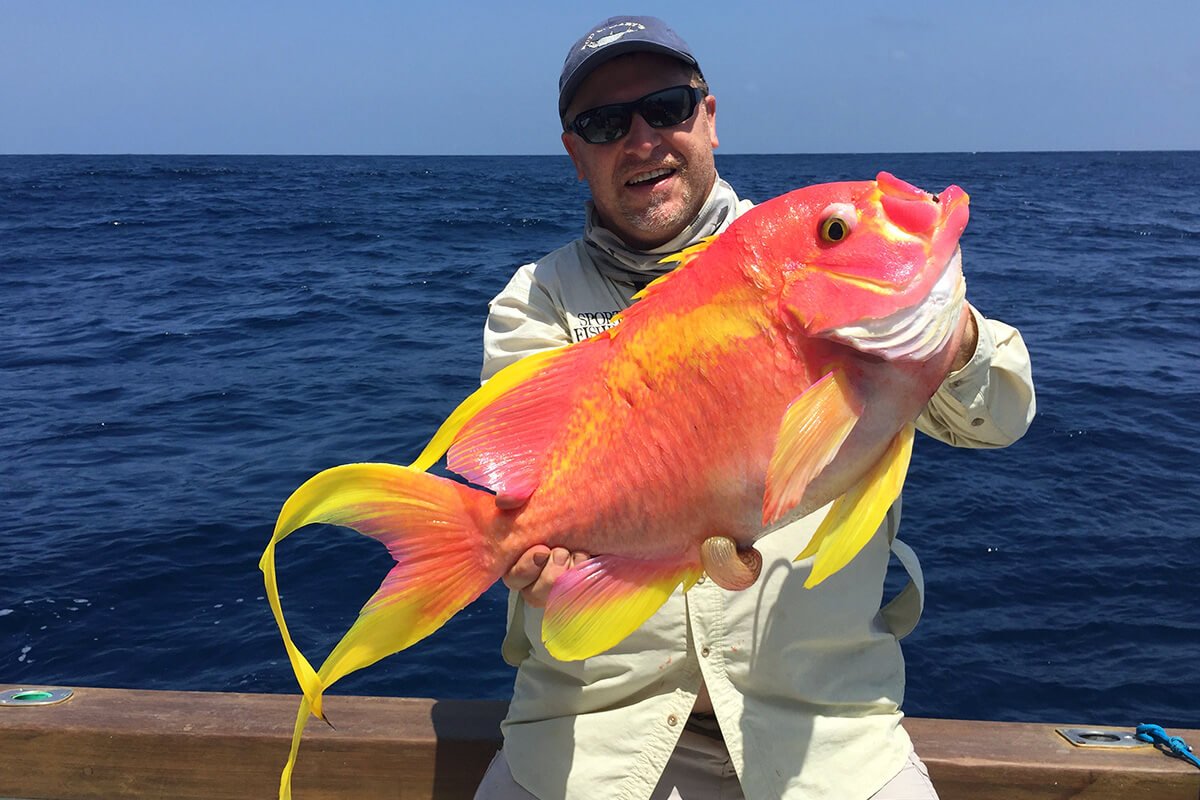Ever wonder what could be hiding in the ocean’s depths? Some of the most unusual and fascinating animals on Earth can be found in deep water. Among these are deep-sea fish, which have evolved especially to endure in some of the harshest habitats on earth.
What Are deep-sea Sea Fish?
Defining Deep Sea Fish
Species of fish known as Deep Sea Fish live in the lowest depths of the ocean, usually less than 200 meters (656 feet). There is extreme pressure, frigid temperatures, and total darkness in these places.
Habitat of Deep Sea Fish
These fish live in the ocean’s hadal and abyssal zones. The hadal zone has the deepest trenches, reaching depths of more than 6,000 meters, while the abyssal zone is between 3,000 and 6,000 meters (9,842 and 19,685 feet) deep.
Types of Deep Sea Fish
Anglerfish
Unique Features
Anglerfish may be the most well-known deep-sea fish. They have a bioluminescent lure on their heads to entice prey.
Habitat and Diet
At depths of 200 to 2,000 meters (656 to 6,562 feet), these fish can be found. Their main food sources are smaller fish and crustaceans.
Gulper Eel
Unique Features
The massive mouths of gulper eels allow them to devour prey that is much larger than themselves.
Habitat and Diet
They live in depths ranging from 500 to 3,000 meters (1,640 to 9,842 feet), where they eat fish, cephalopods, and crabs.
Lanternfish
Unique Features
Little yet common, lanternfish are an important part of the ocean’s food chain. They are covered in light-emitting photophores.
Habitat and Diet
They can be found between 300 and 1,200 meters (984 and 3,937 feet) below the surface, where they eat tiny fish and plankton.
Reproduction in the Deep Sea
Mating Strategies
Deep water fish have unusual ways of mating since they have few mates. Some species mate parasitically, with the male fusing with the female in the case of anglerfish.
Life Cycle of Deep Sea Fish
Deep water fish go through several stages in their life cycle, from egg to adult, with many species having extended lifespans and sluggish development rates.
Can deep-sea fish see?
Importance of Deep Sea Fish in the Ecosystem
Role in Marine Food Webs
Because they may function as both predators and prey, deep sea fish are essential to marine food webs. They support the preservation of marine ecosystems’ equilibrium.
Impact on Carbon Cycling
Deep sea fish play a significant role in the carbon cycle by feeding on organic matter, which helps sequester carbon and influences the regulation of the planet’s temperature.
Can we eat deep-sea fish?
Threats to Deep Sea Fish
Human Activities
Deep-sea fishing
Deep sea fishing that is too intensive puts these species at serious risk of habitat loss and population decreases.
Pollution
Even the deepest regions of the ocean are affected by pollution, which includes chemical pollutants and plastic debris and affects deep sea creatures.
Climate Change Effects
Temperature and oxygen levels in deep marine settings are changing due to climate change, which may have an impact on fish habitats and behavior.
Interesting Facts About Deep Sea Fish
Unique Behaviors
Some deep-sea fish have amazing abilities, like the capacity to create light or endure for decades without consuming a substantial amount of food.
Record-Breaking Species
Records are held by certain deep-sea fish, such as the largest bioluminescent displays or the fish that live the deepest.
Which fish is found in the deep sea?
Why are deep-sea fish so big?
Increased dissolved oxygen
Deep-sea gigantism is thought to be an adaptive characteristic meant to prevent asphyxiation in ocean waters, which explains the observed tendency. Bigger creatures can breathe enough because they can take in more dissolved oxygen from the ocean.










